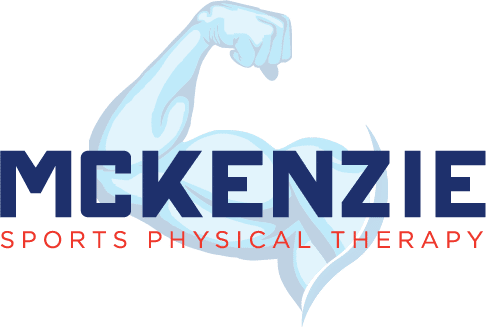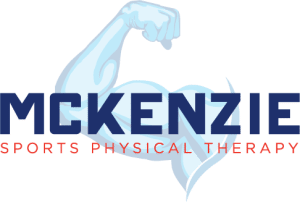You’re probably reading this post because you’ve had a SLAP tear, or know someone who’s had a SLAP tear. What is a SLAP tear anyway? A SLAP (Superior Labrum Anterior-Posterior) lesion is a tear in the superior portion of the labrum of the shoulder. Picture your shoulder joint; it’s a ball and socket joint, specifically much like a golf ball on a tee when relating the shoulder to a comparable size ratio.

Take a closer look at that tee; see how there is a lip on the tee? That lip is responsible for keeping the golf ball on the tee. If that lip did not exist, the ball would roll right off that tee when any outside force was applied to it; such as a gust of wind. The labrum at the shoulder is analogous to this example. The labrum is responsible for keeping the ball, or head of your humerus, in the socket. If there is a tear in the labrum, the ball can roll out of the socket. This is termed instability at the shoulder joint, which can cause painful clicking with arm movement, decreased or apprehensive range of motion, and decreased functional performance.
The superior portion of the labrum is inherently more prone to injury due to the reduced blood supply to it. Therefore as we age, there is a decreased potential for healing because our blood supply decreases overtime. In overhead athletes such as throwers, swimmers, tennis players etc., a SLAP lesion usually occurs as a result of a peel-back mechanism when the shoulder is in maximal external rotation (in the late cocking phase of throwing in the picture below). SLAP lesions may occur in isolation or concomitantly with other injuries such as a rotator cuff tear. Andrews has shown that as much as 73% of baseball pitchers with SLAP lesions also have partial thickness tears of the rotator cuff. And 80-90% of baseball pitchers have some sort of labral pathology.
There are many kinds of SLAP lesions documented in the literature. I have seen 11-12 ways to describe the injury myself; it’s gets very confusing. In short, the SLAP tear is either repaired or debrided surgically. SLAP repairs vs. debridements have different rehab protocols. In general, a debrided SLAP lesion is one which the labrum had frayed edges and has been cleaned up (ie- like you would cut the frayed ends off of shorts or jeans). A repaired SLAP lesion is one in which the labrum or lip, had to be tacked down to the “tee” again (ie- like nailing down a loose shingle to your roof after a flap of it broke free in a recent storm). An athlete with a debrided labrum can be progressed much faster than one who had their labrum repaired, as there was no tissue that was surgically repaired. However, the debrided tissue may be irritated from the injury or from the surgery itself, and the athlete should be progressed as tolerated.
This is the arthroscopic SLAP (Superior Labrum Anterior-Posterior) Protocol/guideline that I use when treating my athletes. “Weeks” refers to the # of weeks out of surgery.
SLAP Debridements:
0-2 Weeks: Should achieve full PROM(passive range of motion) in all directions.
2-4 Weeks: Begin AROM (active range of motion), and gentle isotonics (constant tension throughout arc of motion) at 2 weeks.
**No biceps contractions until 3 weeks**
4-6 Weeks: Begin advanced strengthening routine. Focus should be on dynamic stabilization (emphasis should be on scapular muscle strength and neuromuscular control), and creating a posterior dominant shoulder by aggressively strengthening the posterior rotator cuff.
A few of my favs:
SLAP Repairs:
PHASE 1: Weeks 1-6:
Sling: *Sleep in sling immobilizer for 3-4 weeks*, May have arm out of sling to perform ROM activities at 2-3 weeks, otherwise keep in sling 24hrs/day. Discontinue use of sling at 4 weeks with physician approval.
PROM/AAROM (active assisted ROM): **NO Sleeper Stretch until 10-12 weeks**
Weeks 2-3
- Pendulums on physioball (non painful)
- Forward scaption to 90 degrees w/ overhead pulley (No motion overhead >90 degrees for 4 weeks)
- Cane External Rotation to 20 degrees w/ arm at side (0 degrees of abduction)
- Cross Arm stretch to increase Internal Rotation
Weeks 4-6
- Cane External Rotation to 45 degrees w/ arm abducted to 45 degrees. *May abduct arm to more than 45 degrees after week 6 as tolerated with progression to 90 degrees of abduction*
- Gradually improve PROM/AAROM as tolerated in all directions
AROM:
Weeks 4-6
- 0-90 degrees shoulder scaption (multiple sets are okay to be performed for strengthening at this time)
Strengthening:
Weeks 2-3
- sub-maximum isometrics (all directions)
- dynamic isometrics into External Rotation and Internal Rotation
- scapular exercises (depression on ball, supine serratus punch, scapular retraction)
Weeks 4-6
- short arc, gentle isotonics for the posterior rotator cuff (scaption to 90 degrees, sidelying ER, prone horABD to 45 degrees)
- Scapular strengthening with theraband retraction, standing theraband shoulder extension, prone row arm-to-body
Proprioception (knowing where your arm is in space):
Weeks 2-6
- Open chain rhythmic stabilization (therapist assisted)
PHASE 2: Weeks 6-12
PROM: Progress as tolerated moving to full PROM by 8-10 weeks. Initiate sleeper stretch at week 10-12.
AROM: Progress as tolerated moving to full AROM by 10-12 weeks
Strengthening:
Week 6
- Progressive anterior and posterior rotator cuff strengthening (theraband IR/ER at side)
Week 8
- Begin progressive biceps strengthening (my bias is to use low loads with eccentric contractions)
- Progressive scapular muscle strengthening can include weight bearing now (quadruped serratus punch, unilateral serratus step up, chair dips w/ elbow locked, theraband rows, ball circles on wall)
Week 10-12
- Begin sub-maximal overhead lifting at this time frame
Proprioception
Weeks 10-12
- Begin weight bearing proprioceptive training exercises with therapist assistance
- Progression: Slow to fast speeds, known perturbations to random perturbations, submaximal to maximal perturbations, eyes open to eyes closed.
PHASE 3: Weeks 12-18
ROM: Maintain full A/PROM
Strengthening:
- Use principles of progression and overload; higher intensity, lower repetitions
- Strengthening above 90 degrees –> move from submaximal to maximal loads
Proprioception:
- Open chain in non-provocative positions –> provocative positions
- Weight bearing w/ both arms –> one arm
- Weight bearing on stable surface –> unstable surface
Begin Interval Throwing Program at 16 weeks
Being Interval Golf Program at 14 weeks
Begin Interval Swimming Program at 16 weeks
Begin Interval Tennis Program at 14 weeks
**Begin any of these programs when your therapist deems you have appropriate strength, muscular endurance, good scapular control and stability. The termination of these programs is when you will be ready to return to full sport participation.**
Special SLAP Populations/Surgeries:
Arthroscopic SLAP repair with Biceps Tenodesis:
No biceps strengthening for 12 weeks, then begin light isometrics –> progress to isotonics –>bands –> plyometric activities
Return to full activity by 5-6 months
SLAP repair with Thermal Capsular Shrinkage:
Off mound throwing at 6 months –> return to full play at 9 months
Did learn anything from this article and SLAP Repair Protocol/Guidelines? Are you going to use this or give it to your therapist to use on you? Tell me below.
Do you know someone who could benefit from reading this article? Please share it with them on the Left <—-



